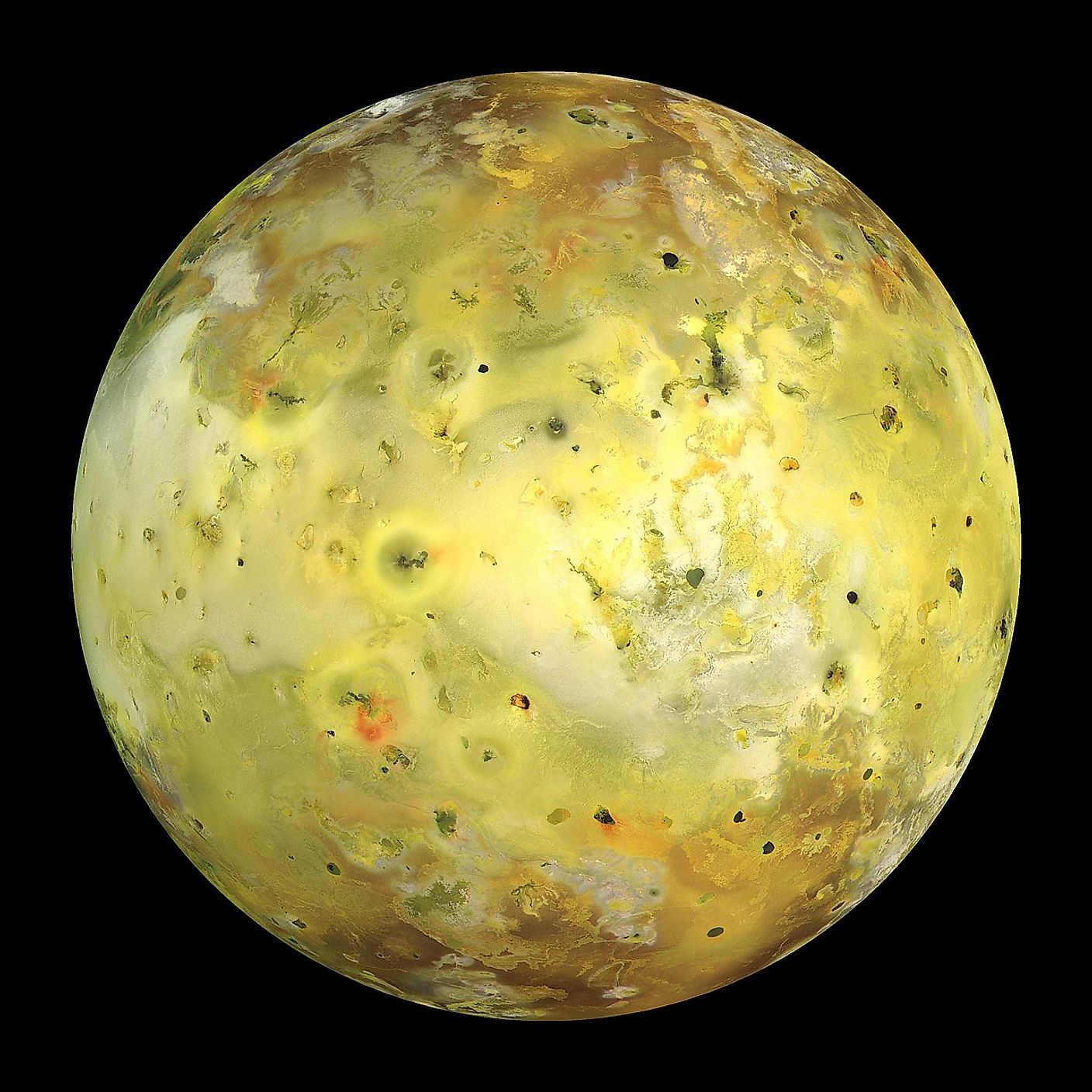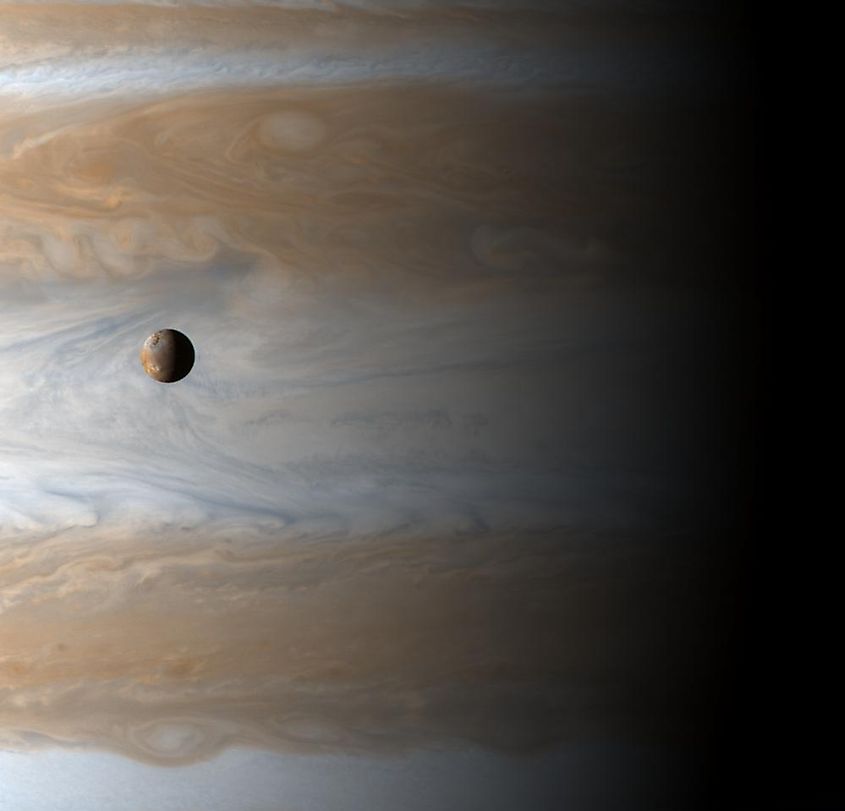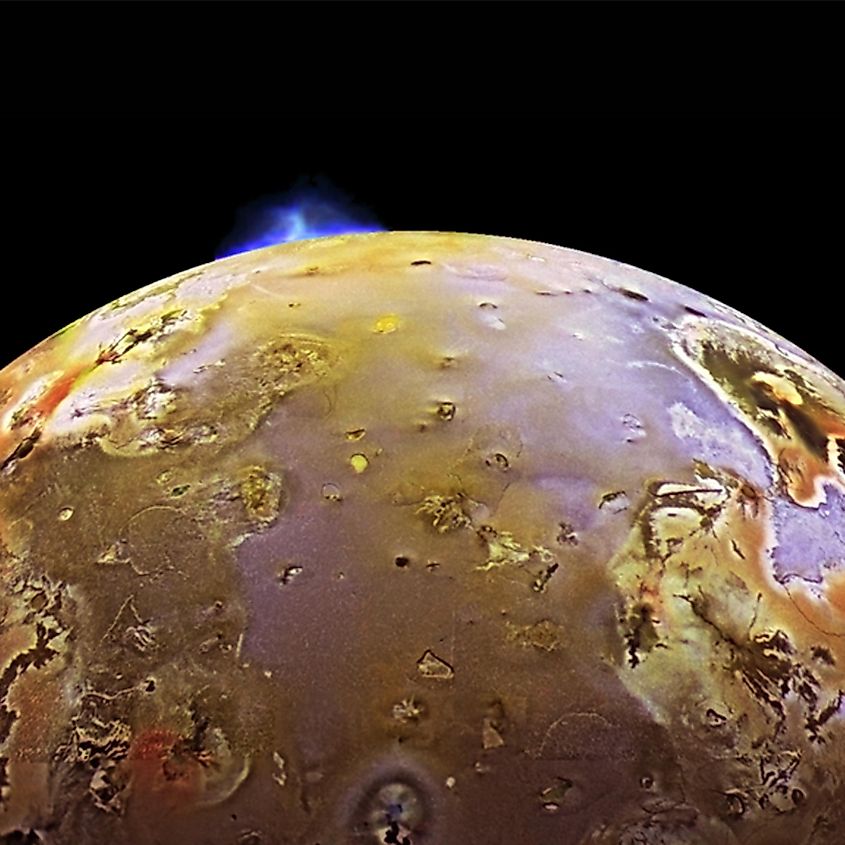
The Volcanoes Of Io
For the longest time, the Earth was the only world known to have active volcanoes. That all changed in 1979 when the Voyager 1 and 2 spacecrafts completed their flyby of the planet Jupiter. In addition to studying the gas giant, Voyagers 1 and 2 took the first high resolution images of Jupiter’s four Galilean Moons. One of them, called Io, proved to be a mysterious world. Unlike most moons, Io was entirely devoid of craters. A lack of craters tends to be an indication that a world is geologically active, being that geologic forces will quickly erode any impact craters over time. Not only did Io have no craters, its surface was brilliantly colored in red, orange, yellow, and green. Io proved to be unlike anything else in the solar system. While studying images of Io, astronomers began to notice strange crescent shapes forming off of its surface. They originally assumed these shapes were other moons located behind Io, but all their calculations revealed that no moon was there when the images were taken. Further analysis revealed that astronomers were witnessing the first volcanic eruption to ever be observed on another world. Io turned out to be the most volcanically active world in the solar system. While having a diameter of only 3,600 kilometres (5% larger than Earth’s moon), Io is home to over 400 volcanoes. Relative to its size, Io is the most geologically active world in the solar system.
Why Is Io So Active?

Io is the innermost of the four Galilean Moons, orbiting Jupiter at an average distance of 262,000 miles (421,700 kilometres). Like every object in the solar system, the orbital path of Io is not circular. Rather, Io orbits Jupiter in an ellipse, and so the distance between Io and Jupiter changes during the duration of Io’s orbit, which lasts about 42 hours. Sometimes Io is further away from Jupiter, and at other times it’s closer. Since the distance between the two objects changes, the gravitational pull that Jupiter exerts on Io also changes. The changing force of gravity compresses and stretches Io, which in turn creates friction within Io’s core. The friction generates heat that moves outwards from Io’s core, providing the small moon with a tremendous amount of heat energy that powers the volcanoes on its surface. This process is known as gravitational tidal heating.
Volcanic Eruptions On Io

Volcanoes erupt almost daily on Io, and it is often said that the surface of Io changes as quickly as weather on Earth. Although that is somewhat of an exaggeration, Io does experience regular resurfacing due to the sheer number of active volcanoes across such a small surface area. The weak surface gravity of Io allows volcanic plumes to reach much higher than they do on Earth. Some of the largest volcanic eruptions observed on Io have produced plumes that reach heights of 300 miles (500 kilometres). Like the rocky planets in our solar system, Io is believed to have a molten iron core and a silicate crust. Interestingly, Io is the driest world in the solar system, having less water on its surface than any other known object that orbits the sun. Nearly every moon in the outer solar system contains an abundance of ice, yet due to the amount of active volcanoes on Io’s surface, it is nearly devoid of any water. The most powerful volcano on Io is called Loki Patera, and has a diameter of 126 miles (202 kilometres). Loki Patera is so powerful that it contributes a staggering 25% of Io’s total heat output. Loki Patera is also home to one of Io’s largest lava lakes.
Io’s colorful surface is a direct result of its volcanoes. Lava that flows across Io’s surface contains an abundance of various chemicals such as sulfur and sulfur dioxide. The sulfur contained within Io’s magma is what causes the surface to be colorful, with different colors representing different temperatures of sulfur across the surface.











